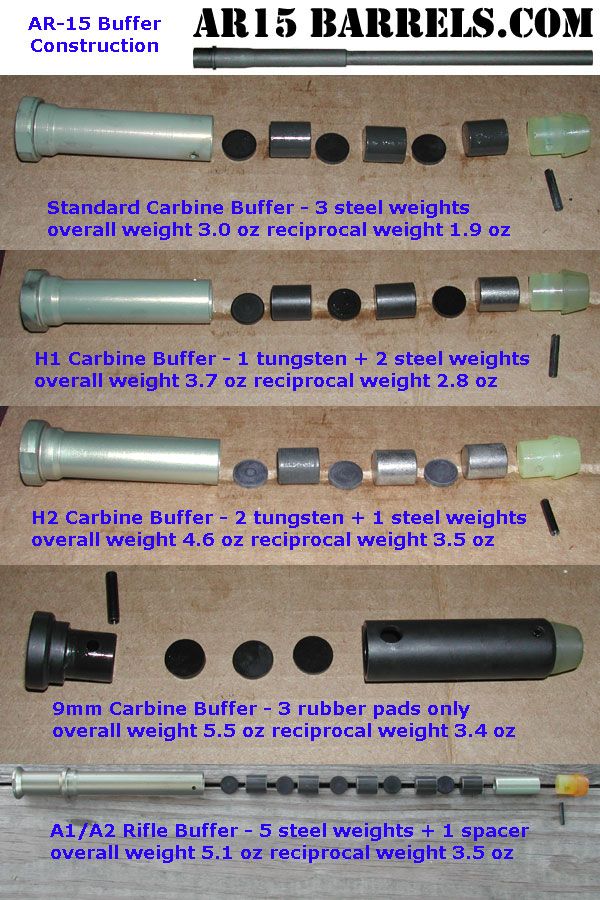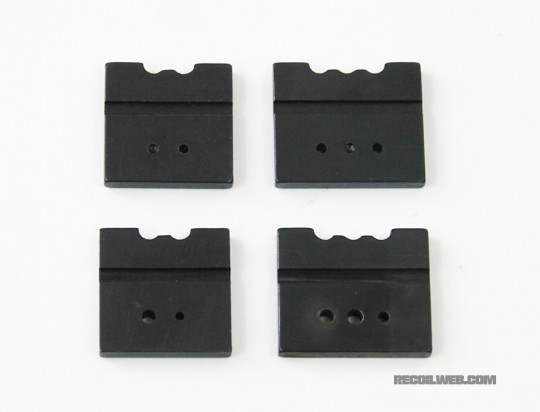I am on another build trip. I have several Spikes Tactical T2 buffers that use tungsten powder instead of steel and tungsten discs.
Not sue if they are the cause, but I NEVER heard the AR twang until I used a lower without the T2 buffer.
Getting an AR10, going to make a heavy rifle buffer. Purchased a bottle dog ear tipping weight tungsten. It was the best price for pure tungsten, $14 for 3 ounces of powdered tungsten.
Going to take the AR10 buffer apart and put the powdered tungsten in. Hoping for another two to three ounces. Heavy AR10 buffers are VERY EXPENSIVE ($125). Standard rifle weight is 5.4 ounces, Heavy Buffers makes a 303 stainless 10 ounce buffer.
Of course this will also work for our AR15 buffers
Pretty simple, drive out the roll pin that holds the plastic buffer tip, remove tip. Shake out the steel or tungsten discs that are inside.
Fill buffer with tungsten allowing space for the plastic tip to be installed. Reinstall tip and roll pin. Shoot
Actually I would weigh every step, and use epoxy on area between plastic bottom and tungsten powder so nothing can escape.

Next project or projects is adding adjustable gas blocks to my ARs as they are ALL over gassed. Then I plan on cutting weight from the bolt carrier and buffers.
My new DPMS 308 Long Range 308 Lite rifle gets in to the FFL tomorrow. Going to break in the barrel by shooting 3-5 shots each time, then clean with JB Bore Cleaner and Bore Snakes. I figure it will take 20-30 shots to get the new 8-32x50 scope dialed in starting at 25 yards, then 50 then 100, finally at 200 yards.
I have a Wilson Combat adjustable gas block on order, depending on how the 308 recoil affects me I may take the barrel off and have the muzzle threaded for a JP Enterprise 'Cooley" brake. Last year there were days I could not lift my right arm up to shoulder level without horrible pain. Much less pain this year.
With the gas block installed I will go with a lighter rifle length buffer. They don't make one, but I have the JP Enterprise AR15 LMOS buffer that weighs 3 ounces compared to 5.4 stock. It is too long, plan on using a tubing cutter to cut the aluminum to the correct length and then drill a new roll pin hole for the plastic bumper piece.
JPLMOSbuffer_zps597a4242.jpg Photo by brasse | Photobucket
I used over one bottle of Tungsten on an AR15 carbine buffer. Original weight was 2.95 ounces. My T2 buffer was 4.05 ounces.
I emptied out the carbine buffer internals, and put as much tungsten as I could. You have to keep tapping and settling the tungsten powder. New weight is 4.20 ounces. So between a T2 and a T3 buffer. this one is going into sons AR15 that is over gassed. Cost slightly over $20.
Haven't tried it in my AR10 buffer yet
Not sue if they are the cause, but I NEVER heard the AR twang until I used a lower without the T2 buffer.
Getting an AR10, going to make a heavy rifle buffer. Purchased a bottle dog ear tipping weight tungsten. It was the best price for pure tungsten, $14 for 3 ounces of powdered tungsten.
Going to take the AR10 buffer apart and put the powdered tungsten in. Hoping for another two to three ounces. Heavy AR10 buffers are VERY EXPENSIVE ($125). Standard rifle weight is 5.4 ounces, Heavy Buffers makes a 303 stainless 10 ounce buffer.
Of course this will also work for our AR15 buffers
Pretty simple, drive out the roll pin that holds the plastic buffer tip, remove tip. Shake out the steel or tungsten discs that are inside.
Fill buffer with tungsten allowing space for the plastic tip to be installed. Reinstall tip and roll pin. Shoot
Actually I would weigh every step, and use epoxy on area between plastic bottom and tungsten powder so nothing can escape.

Next project or projects is adding adjustable gas blocks to my ARs as they are ALL over gassed. Then I plan on cutting weight from the bolt carrier and buffers.
My new DPMS 308 Long Range 308 Lite rifle gets in to the FFL tomorrow. Going to break in the barrel by shooting 3-5 shots each time, then clean with JB Bore Cleaner and Bore Snakes. I figure it will take 20-30 shots to get the new 8-32x50 scope dialed in starting at 25 yards, then 50 then 100, finally at 200 yards.
I have a Wilson Combat adjustable gas block on order, depending on how the 308 recoil affects me I may take the barrel off and have the muzzle threaded for a JP Enterprise 'Cooley" brake. Last year there were days I could not lift my right arm up to shoulder level without horrible pain. Much less pain this year.
With the gas block installed I will go with a lighter rifle length buffer. They don't make one, but I have the JP Enterprise AR15 LMOS buffer that weighs 3 ounces compared to 5.4 stock. It is too long, plan on using a tubing cutter to cut the aluminum to the correct length and then drill a new roll pin hole for the plastic bumper piece.
JPLMOSbuffer_zps597a4242.jpg Photo by brasse | Photobucket
I used over one bottle of Tungsten on an AR15 carbine buffer. Original weight was 2.95 ounces. My T2 buffer was 4.05 ounces.
I emptied out the carbine buffer internals, and put as much tungsten as I could. You have to keep tapping and settling the tungsten powder. New weight is 4.20 ounces. So between a T2 and a T3 buffer. this one is going into sons AR15 that is over gassed. Cost slightly over $20.
Haven't tried it in my AR10 buffer yet




